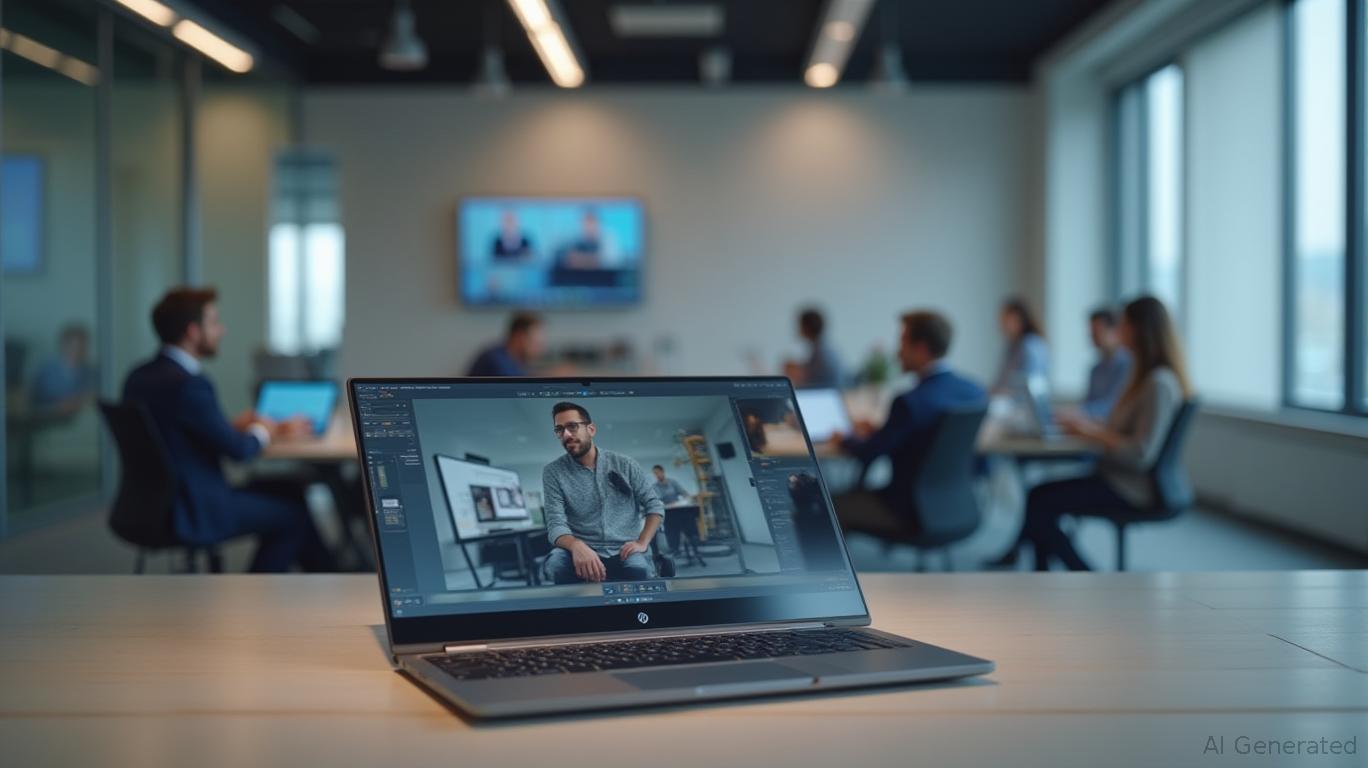AInvest Newsletter
Daily stocks & crypto headlines, free to your inbox
The world of work has fundamentally shifted. As hybrid work becomes the new normal, enterprises are prioritizing tools that blend seamless collaboration, security, and productivity.
Inc., long synonymous with printers and PCs, is making a bold bet that its pivot toward AI-driven productivity solutions will position it as a leader in this evolving landscape. While its Q2 2025 earnings revealed near-term margin pressures, the company's strategic investments in hybrid work infrastructure and AI-integrated hardware/software stacks suggest a compelling long-term narrative for investors. Let's dissect the data and the strategy to determine whether HP is building a sustainable moat in this space—or if it's overestimating its ability to adapt.
HP's recent moves underscore a clear thesis: hybrid work isn't just a temporary trend but a permanent structural shift. Its Q2 2025 earnings highlighted strong Commercial Personal Systems (PS) revenue growth (+9% YoY), driven by demand for devices like the HP EliteBook Ultra G1i and ZBook Ultra G1a, both of which integrate AI capabilities for real-time collaboration and productivity. These devices, announced at CES 2025, leverage 48 TOPS NPU performance (for the EliteBook) and AMD Ryzen AI Max PRO processors (for the ZBook) to accelerate tasks like video editing, data analysis, and virtual meetings.
The Workforce Experience Platform (WXP), launched in early 2025, further cements HP's push into software-driven solutions. This AI-powered ecosystem manages over 680,000 connected devices, processing 700GB of daily data to resolve IT issues and optimize workflows. For example, its Fleet Explorer tool allows IT teams to query device performance via natural language—“Which laptops had memory overutilization last week?”—thereby reducing downtime and improving employee satisfaction.
HP's financials tell a mixed story. While Personal Systems revenue rose 7% YoY (to $9.0B) on robust Commercial demand, Printing revenue fell 4% due to weaker supplies sales. The company's non-GAAP EPS dropped 13% to $0.71, missing estimates, as margin pressures (down to 7.3% from 8.8%) and elevated trade-related costs (e.g., U.S. tariffs) weighed on profitability.
However, the shift toward higher-margin AI-enabled devices and software services is evident. Consider:
- AI Companion software: Preloaded on new devices, it claims to boost productivity by 2x in tasks like email management and video editing.
- HP Wolf Security: AI-driven threat detection has become a key differentiator in an era where remote work expands attack surfaces.
Meanwhile, sister company Hewlett Packard Enterprise (HPE) reported 6% YoY server revenue growth to $4.1B, fueled by AI data center demand. This suggests HP's broader ecosystem—spanning PCs, servers, and hybrid work software—is aligning to capitalize on enterprise spending on productivity tools.
The hybrid work boom isn't just about laptops and printers—it's about solving the “digital friction” that plagues remote teams. HP's WXP platform addresses this directly, reducing IT bottlenecks and improving employee experience. With 68% of workers citing moderate-to-severe digital friction (per Mosaic Group), there's a clear demand for tools that streamline workflows.
HP's strategy hinges on three pillars:
1. AI-Enhanced Hardware: Devices like the EliteBook Ultra offer performance gains that justify premium pricing.
2. Software as a Service (SaaS) Integration: WXP's AI analytics and fleet management tools create recurring revenue streams.
3. Enterprise Partnerships: Collaborations with companies like Poly (for headsets) and Juniper (if the merger proceeds) could deepen its hybrid work ecosystem.
HP's shift to AI-driven productivity tools is a calculated bet on a multi-year trend. While near-term earnings are clouded by margin contraction and macroeconomic uncertainty, the company's strategic moves—expanding its hybrid work ecosystem, reducing reliance on Printing, and leveraging AI—align with a sector poised for growth.
Buy Signal:
- If HP can stabilize margins above 7% (its Q2 non-GAAP margin) while growing Personal Systems revenue at >5% YoY, it could outperform in a hybrid work-driven IT spend cycle.
- The WXP platform's scalability (already managing 700GB/day of data) suggests untapped SaaS upside.
Hold/Wait:
- Short-term volatility persists. The Juniper merger's outcome and geopolitical risks could delay margin recovery.
HP's pivot from a hardware company to a hybrid work solutions provider is a high-stakes gamble. The Q2 results show execution challenges, but the strategic direction is clear: invest in AI, software, and enterprise IT infrastructure. For investors willing to look past quarterly noise, HP's long-term positioning in a $2.5T hybrid work tech market could yield outsized returns. The question remains: Can HP convert its innovation into sustainable profits before the next recession hits?
HPQ: Buy with a 3–5 year horizon, but keep an eye on margin trends and trade-related costs.
Tracking the pulse of global finance, one headline at a time.

Sep.11 2025

Sep.11 2025

Sep.11 2025

Sep.11 2025

Sep.11 2025
By continuing, I agree to the
Market Data Terms of Service and Privacy Statement
Daily stocks & crypto headlines, free to your inbox
Comments
No comments yet